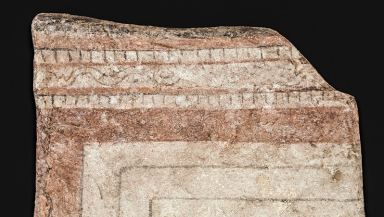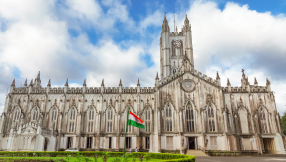
Archaeologists may have unknowingly uncovered the earliest surviving depiction of the Virgin Mary.
A wall painting recovered in the 1920s from the Dura-Europos excavation site in Syria – believed to be the oldest existing Christian sanctuary in the world – is now thought to feature an image of the Virgin Mary at the moment of the Annunciation, according to Aleteia.
The ancient image, depicting a woman by a well, is now stored in a museum at Yale University. It was originally thought to show the Samaritan woman at the well, who Jesus meets in John 4.
A new look has suggested that it may instead show Jesus' mother Mary, following a story told in the second-century apocryphal (non-canonical) Gospel of James, where the angel announces the good news of the incarnation to Mary by a well.
The traditional annunciation story happens in Luke 1:26-38, but in the James account, Mary 'took the pitcher and went forth to fill it with water and lo! a voice saying, "Hail thou that art highly favoured, the Lord is with thee, blessed art thou among women." And she looked around on the right and on the left to see from where this voice could have come'.
The wall-painting originated in a 3<sup>rd century house church, which also includes the earliest-known illustrations of the Good Shepherd, Jesus walking on water with Peter, and the healing of the paralytic.
Some faint, subtle lines around the woman in the wall-painting may now be interpreted as a visual indication of the incarnation of Christ.
The wall painting at Yale University, but the excavation site is now under ISIS control and no archaeologist has been able to visit the site since 2011. Many fear that militants may have looted or damaged sacred artefacts from the sites.
'The Christians at Dura-Europos still have secrets to reveal about early Christianity in the East,' Michael Peppard, the scholar who has pioneered the Marian interpretation of the wall-painting wrote in America. Because of the threat of ISIS however, 'chances to access their particular form of Christian identity are slipping away'.













